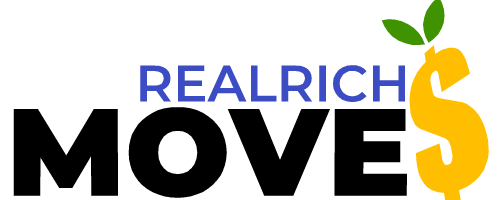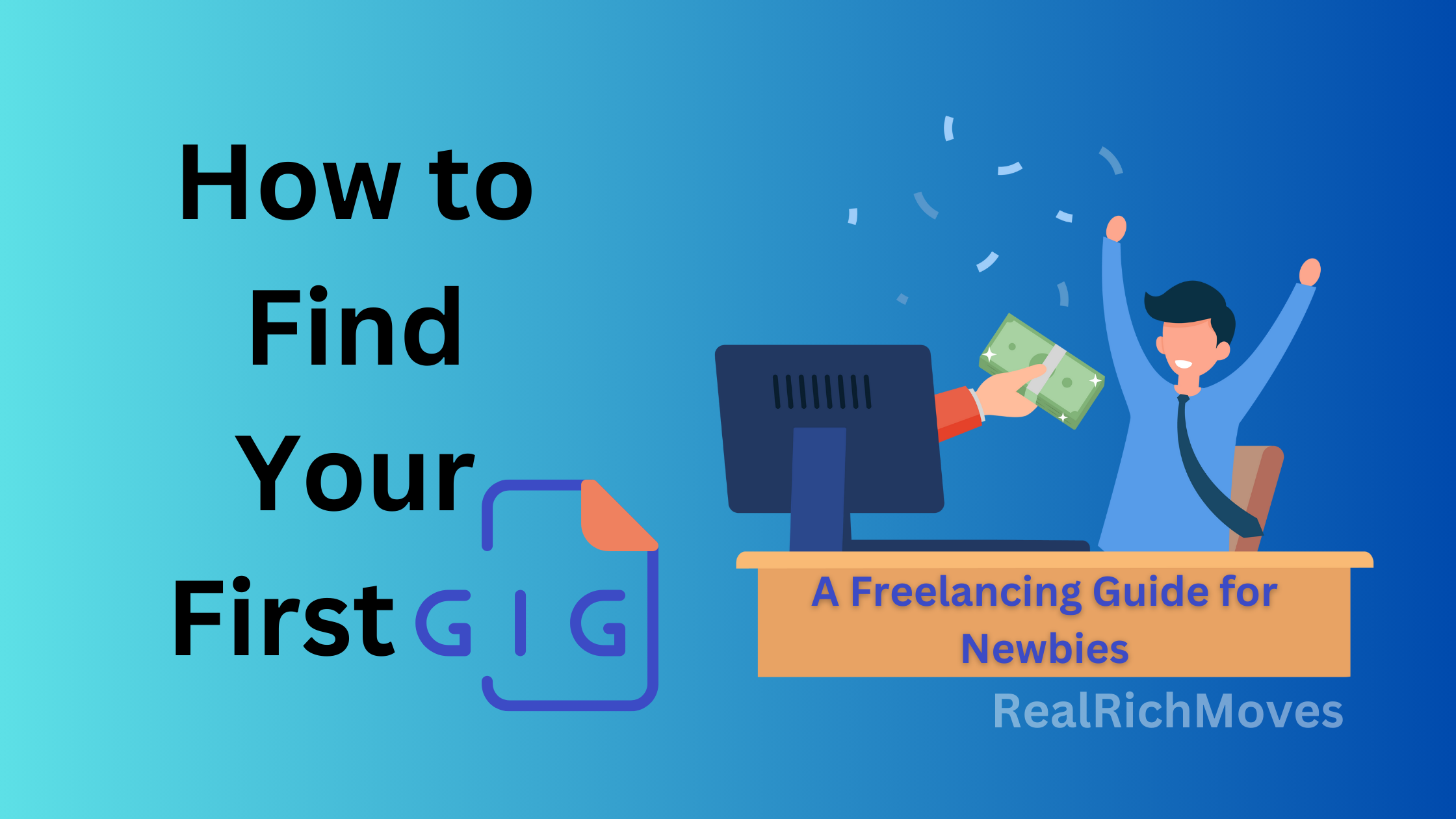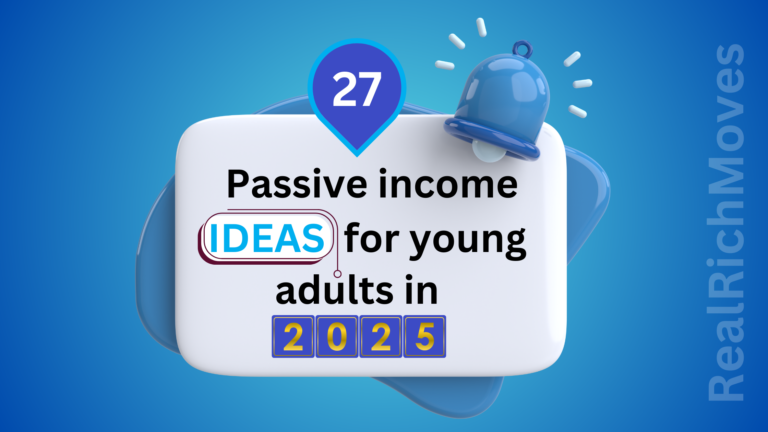Introduction : How to Find Your First Gig
Okay, Gen Z, let’s be real. How to Find Your First Gig in the job market can feel like a never-ending maze, and “adulting” is… well, it’s a lot. You’re scrolling through endless job postings, feeling like you’re stuck in a loop, or maybe you’re a student juggling classes and just trying to make some extra cash. Ever wished you could just do your own thing, set your own hours, and make your own money?
That’s where freelancing comes in. It’s like being your own boss, choosing projects you love, and working whenever you want. Sounds like a dream, right? Let’s break down how to make it your reality.
This post will guide you through the process of starting out in the freelance world. We’ll cover everything you need to know to land that first gig in How to Find Your First Gig.
You’ll learn how to identify your skills, create an online presence, find work, and build a solid foundation for your future. Let’s jump in and get you on the road to financial freedom! We’re going to make getting started less daunting and more doable.
Now, let’s get down to the basics.
What is Freelancing Anyway? (The Basics)
So, what is freelancing, really? It’s a word we hear everywhere, but what does it actually mean? Think of it as being a hired gun, but for your skills. Instead of being tied to one company, you offer your services to different clients on a project-by-project basis.
It’s not just about getting a random gig here and there; it’s about building your own business, one project at a time. You’re essentially selling your skills and time, and you get to choose who you work with and how much you charge.
Freelancing is a big part of the whole “gig economy” – that world where you’re not locked into a set job, you pick and choose when and where you work. It’s all about flexibility and control.
It’s about ditching the conventional career path and carving your own way. The possibilities are endless, and it’s totally aligned with how Gen Z wants to work these days.
There are so many different types of freelance jobs available. Maybe you’re a whiz with Instagram, a coding ninja, or have a knack for writing catchy captions.
You could be a graphic designer creating killer logos, a writer churning out awesome blog posts, or a social media manager making brands look amazing online. The beauty is that there’s a freelance gig for almost any skill!
The best part? You control your hours, you can make extra cash on the side, and you’re building skills you can take anywhere. That means you can fit work around your life, not the other way around.
Working online opens the doors to opportunities from all over the world, meaning you’re not limited by location. It is an amazing opportunity to build a diverse income stream.
It’s the perfect way to gain experience, build your portfolio, and create a career that’s uniquely yours. So, are you ready to join the freelancing revolution?
Now that you have an idea about freelancing, let’s see if it is right for you
Is Freelancing Right For You? (The Real Talk)
Okay, freelancing is awesome, but let’s not sugarcoat it. It’s not all sunshine and rainbows. It takes hustle, discipline, and a bit of organization.
It’s not for everyone, and it’s important to be honest with yourself about whether it aligns with your personality and work style.
You’re basically your own boss, which means no one’s gonna be there to nudge you to work – that’s where the grind comes in. You’ve got to be self-motivated, able to manage your time, and organized enough to handle multiple projects.
You need to be your own cheerleader, your own manager, and your own motivation. It’s a big responsibility, but it can also be incredibly rewarding.
Finding your first client can feel like shouting into the void, and figuring out what to charge? Tricky stuff. You may face difficulties figuring out the value of your time and services.
And let’s be real, there are going to be days when it feels like you’re hitting wall after wall. It’s all part of the process, though, and you’ll learn from every experience.
But don’t let these challenges scare you off. The important thing is to not be afraid to test the waters. It’s okay if you don’t nail it the first time around; freelancing is a marathon, not a sprint!
It’s a journey of continuous improvement, and each challenge will help you grow. The key is to learn, adapt, and keep going.
So, if you’re someone who craves independence, thrives in flexible environments, and loves a challenge, freelancing might just be your jam. Are you ready to take the plunge?
Let’s now move towards more practical steps to get you to your first gig!
Finding Your First Freelance Gig: Let’s Get to It!
Alright, you’re pumped, you’re ready. Let’s talk about the actual steps to finding that first gig! We’ve covered the what and the why, so now we need to get into the how.
It might seem daunting at first, but by breaking it down into manageable steps, you’ll see that it’s totally achievable. It all starts with knowing yourself and your skills and then learning how to put them out there!
It’s time to get practical, roll up your sleeves, and put in the work. This is where your hustle begins, and the more effort you put in, the better the results will be.
So let’s get down to business and turn that dream of freelancing into a reality. Let’s start by figuring out what you actually have to offer to find your first gig.
Step 1: Identify Your Skills and Interests
Okay, before you dive headfirst into the world of freelancing, you need to take a moment and figure out what you’re good at. What are you actually good at? Maybe you’re lowkey a design pro or a writer at heart.
It’s time for some honest self-reflection. What do people compliment you on? What are your go-to skills? What do you enjoy doing? What makes you tick? These are important questions to answer to find your ideal freelance niche.
Seriously think about it: are you a social media expert, can you make videos that go viral, or do you have an eye for design? Those are all in-demand skills!
Do you have a knack for writing, editing, or proofreading? Can you code, create websites, or manage online content? It’s time to tap into your inner talents.
It’s not just about formal qualifications, but about what you are naturally good at. This is about your unique strengths and what makes you stand out.
You could have a hidden talent that you’ve never even considered could be a way to make money. Think about the things you do without even thinking – those could be your hidden goldmines.
Match your talents with what clients actually need, and you’re already on your way. It’s about finding the intersection between what you enjoy and what people are willing to pay for.
Once you identify these skills, you can target your search for the best jobs. It’s about finding your niche where you can shine.
Step 2: Create a Killer Online Presence
In today’s digital age, your online presence is basically your first impression. You need to show the world what you’re capable of; think of it as your digital handshake.
It’s not just about having a social media profile; it’s about creating a professional and credible online presence. It shows potential clients that you’re serious about freelancing.
Even if you’ve never had a client, you can put together a simple portfolio showing what you’ve done in school or even just for fun. Include personal projects, school assignments, or any relevant work that demonstrates your skills.
You don’t need to have a ton of paid experience to get started. Your goal is to show your skill set and passion for the craft. A good portfolio is your chance to impress potential clients.
Make sure your LinkedIn profile is on point – it’s like your digital business card. Complete all the sections, and highlight your relevant experience and skills. Make sure you have a professional-looking profile picture.
Use action words, relevant keywords, and showcase your accomplishments. LinkedIn is a great tool for networking and building connections.
Showcase your talents wherever possible – if you’re a designer, show off your creations on Instagram! Use social media platforms strategically to showcase your work. If you’re a writer, use LinkedIn or Medium to share your writing samples.
Use Instagram, Pinterest, or Behance to display visual projects. Make sure your online presence is consistent with a professional feel.
Having an online presence shows you are legit and ready to get to work. So get your profiles in check, and be sure that everything represents the best version of you!
Step 3: Where to Find Freelance Jobs
Now that you’ve identified your skills and built an online presence, it’s time to start looking for jobs. There are so many opportunities out there, but you have to know where to look.
There are several platforms that make it easy to find gigs. These are like freelance job boards where clients post projects and you can put in your bid. Upwork, Fiverr, and Freelancer are some of the most common ones.
Each platform is a little different, so take some time to navigate the platforms. Understand how to bid for jobs, and make sure your profile is super-attractive to potential clients.
Look at the various profiles and see what others are doing to get hired. Learn from successful freelancers, and try to model your strategy off theirs.
There are also niche job boards that might be better for your specific skills. Don’t just stick to the big guys; there might be smaller boards, or even Facebook groups, where you can find opportunities.
Be sure to join groups related to your skills or industry. These are amazing resources to find hidden gems and network with like minded individuals.
You can also reach out directly to companies or clients you’d like to work with. This is about being proactive and creating your own opportunities.
It’s all about networking, being proactive, and building connections. Do your research and see which platforms are trending, and which fit with your working style.
Your first goal should be to start racking up those great reviews. These are like gold in the freelance world. Good reviews lead to more clients, so provide quality work.
Start small, be consistent, and don’t be afraid to experiment. The more you put yourself out there, the better your chances of landing that first gig.
Step 4: Crafting a Winning Freelance Proposal
Okay, so you’ve found a gig you like; now what? Now it’s time to write a compelling proposal. This is your chance to show the client why you’re the best person for the job.
Don’t send a generic, lazy proposal; make sure it’s personalized to the specific job. A good proposal is clear, concise, and directly addresses the client’s needs.
Read the job posting carefully, and understand what the client is looking for. Show that you understand the project and the client’s requirements.
Even if you’re a newbie, you can always show your enthusiasm and how your skills fit their requirements. Emphasize how your talents directly align with their project needs.
Highlight any relevant experience, even if it’s limited. You can show any personal projects, or any previous educational or work experience that fits the bill.
Don’t forget your soft skills – how you talk to people, how you handle deadlines, and how you think on your feet are all essential. These are just as important as hard skills, and shows you’re a well-rounded professional.
Be sure to proofread your proposal carefully before submitting. Grammatical errors and typos are never a good look.
Don’t be afraid to ask the client questions – it shows you’re paying attention and that you care about getting it right. This will help you understand their requirements more clearly and show the client that you are invested in the project.
A strong proposal will increase your chances of landing the gig. Be specific, be enthusiastic, and be professional.
Step 5: Setting Your Freelance Rates
One of the trickiest parts of freelancing is figuring out how much to charge. You’ve got value – don’t sell yourself short!
A common mistake for beginners is to underprice themselves. Know what you’re worth, and don’t be afraid to ask for it.
You can charge by the hour, by the project, or based on the value you bring. It’s all about finding what works for you. Understand the difference between each method and see what fits your situation best.
Charging hourly means you get paid for the time you put in. Charging per project means you get paid a flat fee for completing a task. Value-based pricing means you charge based on the value you bring to the client.
Do your homework: look at what others are charging for similar work, and go from there. Use platforms like Glassdoor or Payscale to get an idea of market rates.
Be realistic with your pricing, but don’t be afraid to value your skills. Always consider the time, effort, and expertise you bring to the table.
Don’t be afraid to negotiate a little, but also know your worth. Don’t be afraid to advocate for yourself and your talents.
It’s okay to adjust your rates as you gain experience and become more confident. You can test various rates to see how it impacts your clientele, so be flexible and adaptable.
The more confident you are, the better your chances of landing your desired rate. Remember that value is more than just cost.
Once you’ve landed your first gig, it’s time to think long term!
Navigating the Freelance World (Beyond the First Gig)
Okay, you’ve landed your first gig – congrats! But the freelancing journey doesn’t stop there. It’s about building long-term success.
This is where you focus on client relationships, finances, and maintaining a healthy work life balance. It’s not just about getting a gig, it’s about building a long-lasting career.
Clear communication is vital. Keep your client in the loop, and always strive for good working relationships. Good communication is the foundation for a successful freelance relationship.
Be sure to be professional and respectful at all times. Good relationships with clients means repeat clients.
As you start making some cash, you’ve gotta get smart about tracking it, saving, and of course taxes. Managing your finances is essential for long-term success.
Be sure to keep good records of all your earnings and expenses. You may need to pay taxes as a freelancer, so be sure to do your research and stay compliant.
You’ve got to set boundaries. Working from home means you can never really ‘leave,’ so be sure to make time for your life outside freelancing. It’s not worth it if you’re always working and burned out.
Time management is key to success as a freelancer. Set realistic goals and stick to your schedules.
Always keep learning, always keep growing, always keep improving your skills. The more skills you develop, the better opportunities you’ll have.
It’s about continually evolving, adapting to new trends, and staying relevant in the market. Make sure you are investing in yourself and your skills.
Now that you are thinking about long term success, let’s see what this looks like for your freelancing career.
Building a Sustainable Freelance Career (The Long Game)
Now, let’s talk about the long game. How do you turn freelancing from a side hustle into a sustainable career? Think bigger than just the next gig: how can you turn this freelancing thing into a long-term game plan? Maybe even a passive income stream?!
Focus on building a strong portfolio and network of contacts. Networking is a valuable tool for finding opportunities and growing your business.
Talk to other freelancers, attend networking events, and connect with potential clients. Building a strong network can lead to referrals and better opportunities.
Develop multiple sources of income. Don’t put all your eggs in one basket, explore different opportunities that are compatible with your skill set. Diversify your income streams so you are not solely reliant on one client or service.
Explore opportunities for passive income to supplement your freelancing. This could be affiliate marketing, or developing digital products you sell to customers.
This is about building a resilient and sustainable career that provides you with financial security and flexibility. So, always be thinking of the bigger picture and the long-term goals.
It’s about having freedom and control over your work and life. With consistent effort, it is entirely possible to build a long-term successful freelance career.
Always stay up-to-date with the latest trends in your industry. This will help you provide more valuable service to your clients.
Be ready to embrace new tools and tech. The better your skills are, the more in demand you will be.
Conclusion
Freelancing is not a far-off dream – it’s something that you can dive into right now. It’s about taking that first step and embarking on an exciting new path.
It may seem challenging at first, but with proper planning and effort, it’s completely achievable for beginners. You can create a flexible and fulfilling career that aligns with your values and goals.
So, what are you waiting for? Take that first step, and let’s build your dream freelance career! It is time to pursue the independence and flexibility that freelancing offers.
The first gig can be challenging, but it is also the beginning of an incredible adventure. Always be open to feedback and embrace the process.
You have the potential to create something amazing, and the journey starts with just one step. So take that leap, and start your journey towards building a successful freelance career!
So that’s all about How to Find Your First Gig. If you’re hungry for more insights, check out my other blog post on Hustle Tips!
Let me know in the comments – what skills are you working with, and what are your biggest hurdles? Let’s help each other out!




